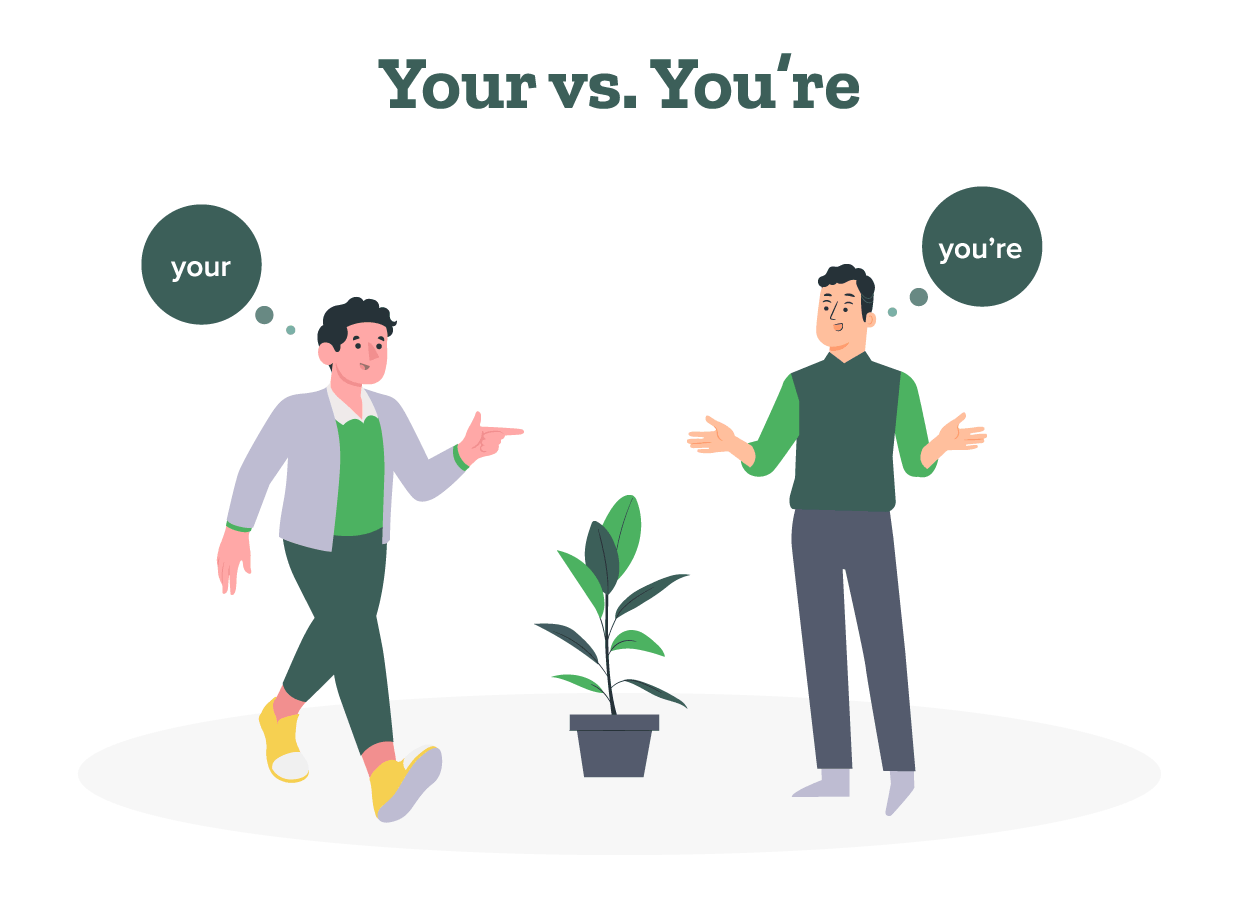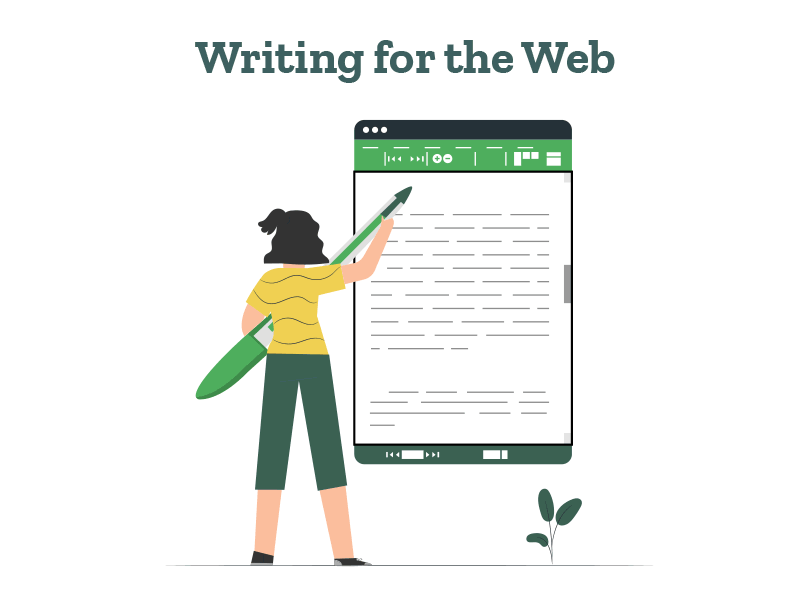Still have questions? Leave a comment
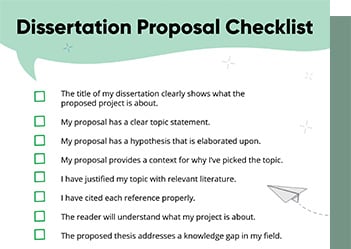
Checklist: Dissertation Proposal
Enter your email id to get the downloadable right in your inbox!
[contact-form-7 id="12425" title="Checklist: Dissertation Proposal"]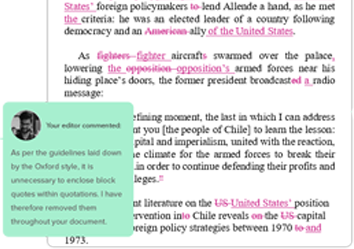
Examples: Edited Papers
Enter your email id to get the downloadable right in your inbox!
[contact-form-7 id="12426" title="Examples: Edited Papers"]Need
Editing and
Proofreading Services?

Book Cover Types: Formats, Bindings & Styles
 Sep 19, 2025
Sep 19, 2025 8
min read
8
min read
The art of producing a book is a layered process with several interesting steps, one of the most fascinating of which is the conceptualisation and creation of the book’s cover.
While most people are familiar with paperbacks and hardcovers, there are actually several types of cover formats available in the market, each with their own positives and negatives. It is important to be aware of these benefits and limitations before choosing which cover type would be ideal for your book. It is also important to keep in mind factors such as durability, cost of production versus selling price, and potential marketing strategies before zeroing in on a particular type of cover.
Let us explore the different types of book covers and learn which ones are best suited to which genre.
Get a Professionally Designed Cover for Your Book Today! Get Started
Book cover formats at a glance
Softcover (paperback)

One of the most popular cover options in the market, the softcover or paperback, is widely used around the world.
Benefits: Its laminated cover is flexible, the books are usually lightweight and portable, and paperbacks also have the lowest production cost per copy. It is suitable for trade books, novels, journals, and guides.
Limitations: The cover is soft and bendable, and hence more susceptible to wear and tear. It lacks end sheets and flaps, which give a more polished look to the book, and is not suitable for large layflat books that are intended to last several years or even generations.
Hardcover (image wrap/case laminate)
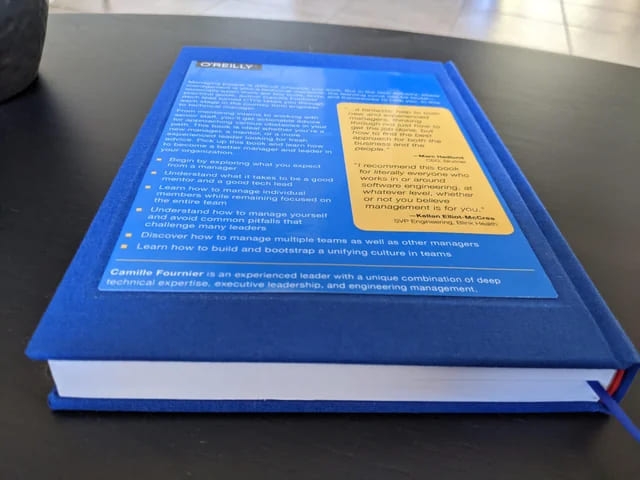
Another supremely popular style, the hardcover is usually considered an upgrade to the paperback.
Benefits: The artwork is usually printed directly on the case, and it usually has a matte finish, giving it a smooth and classy appearance. It includes end sheets, which give it a finished look. It is suitable for children’s books, cookbooks, photo or design books, and keepsakes.
Limitations: This cover type is usually heavier, making the book difficult to carry around. It also lacks flaps.
Hardcover with dust jacket
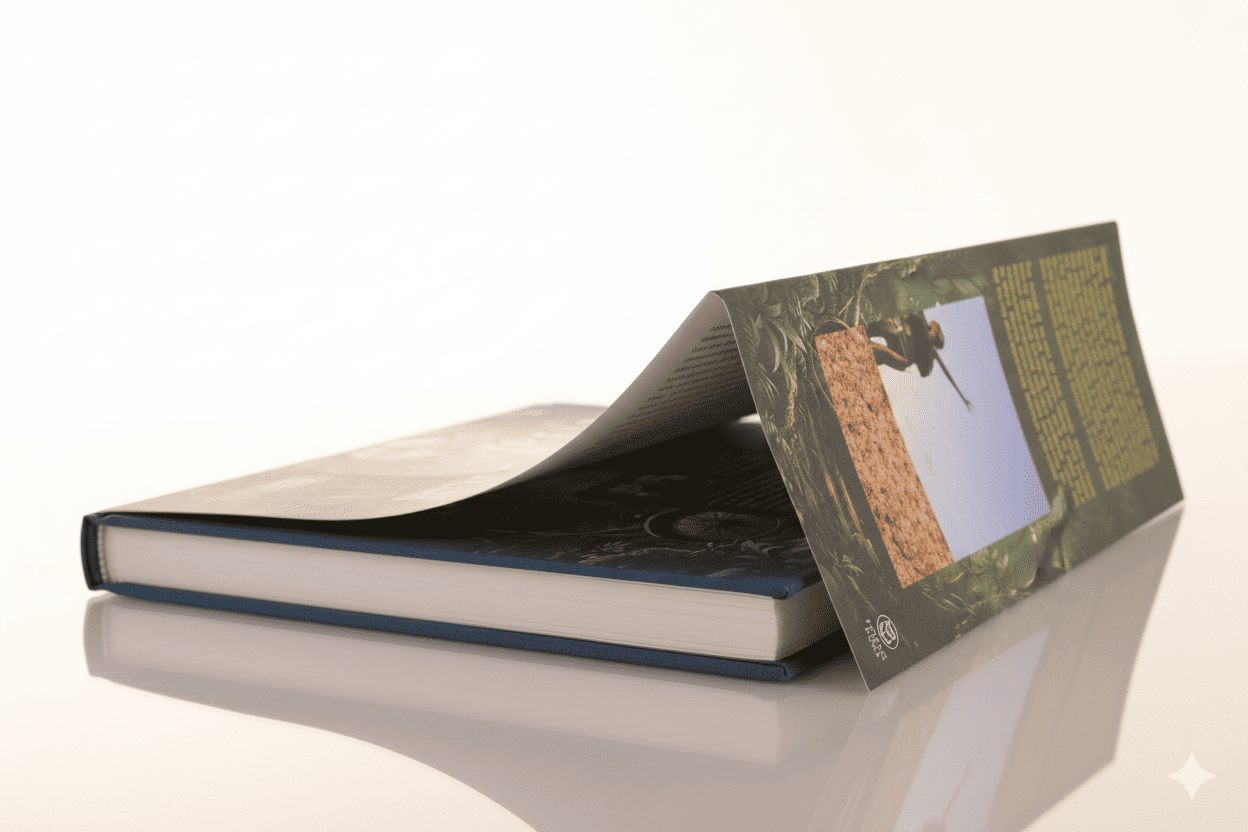
Consider this cover type a premium hardcover with added space for promotional text.
Benefits: With a glossy jacket and flaps that fold neatly over a linen case, this book has a premium appearance. The printable jacket also enables you to ensure all the ancillary information, such as the blurb, author bio, and author photo, is printed on the cover itself. This type of cover is best suited to first editions, prestige projects, and coffee table or art/photography books.
Limitations: Due to its elaborate nature, the jacket is susceptible to wear and tear. Additionally, the case under the jacket is not printed or embossed by default, and can appear plain.
Binding and construction options
Different types of covers are bound differently. Here is a glance at the binding and construction options of the different types of book covers and which types of books they are best suited to.
Perfect bound (paperback)

The softcover or paperback is bound with glue—it has a square spine, and is usually inexpensive to produce in bulk. This cost-effective option is best suited to magazines, catalogs, and mass-produced fiction and nonfiction.
PUR perfect bound
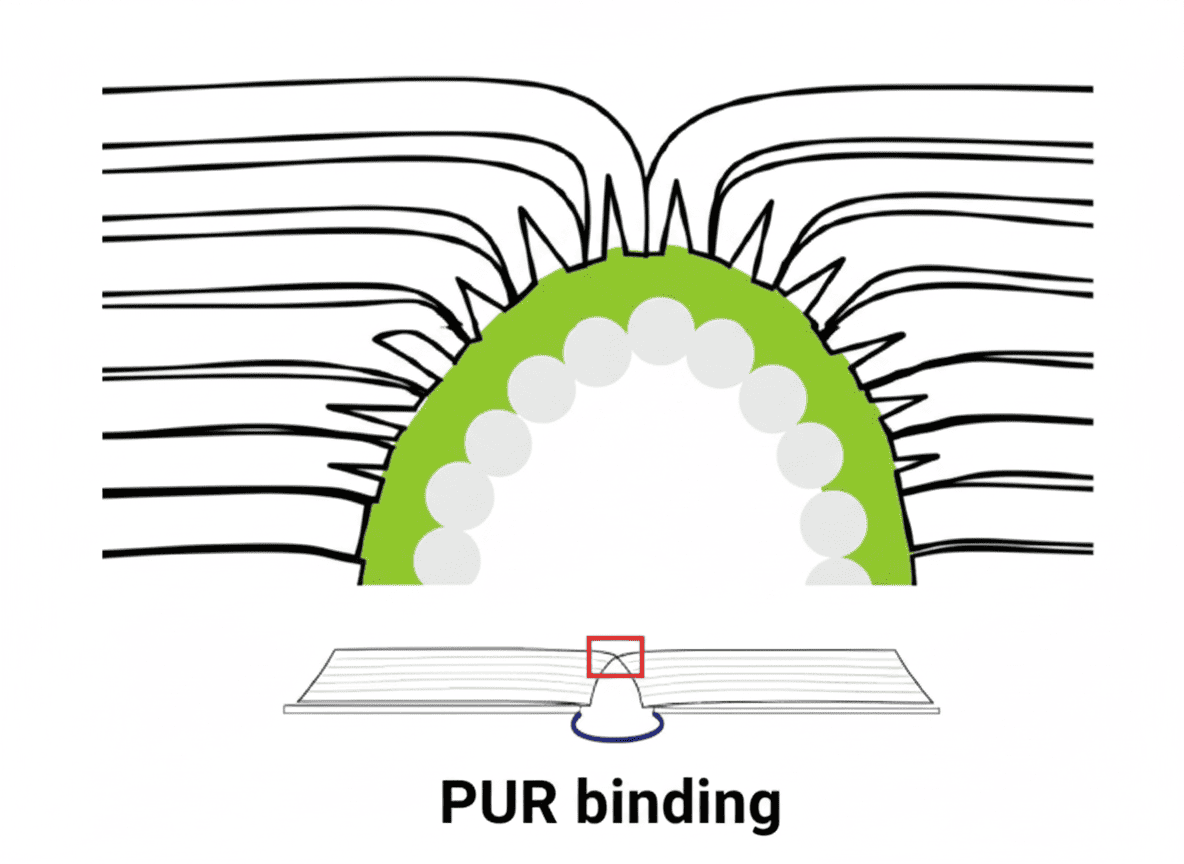
The PUR perfect bound is another variant of the paperback—one that uses a stronger adhesive and has a higher pull strength. This makes it suitable for heavy use and harsh conditions, and it is perfect for books that are likely to go through rough use, such as manuals, brand guidelines, and commemoratives.
Spiral & wire-o
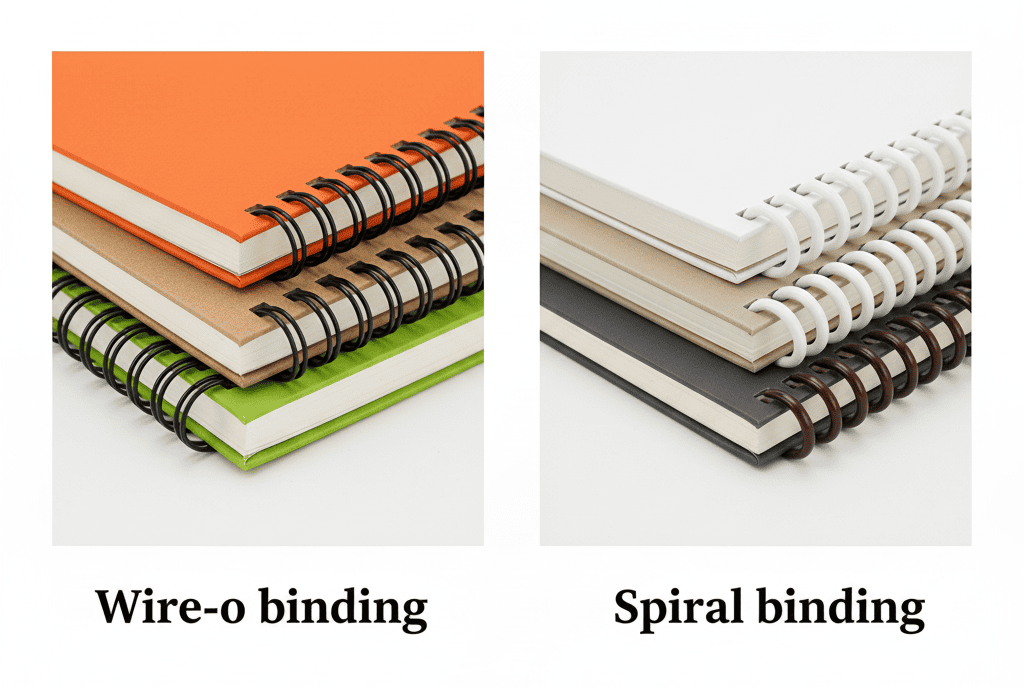
The spiral and wire-o binding type is extremely versatile and is commonly used for notebooks. However, its lay-flat layout, frictionless page turns, and ability to accommodate thick pages also make it suitable for practical use books such as cookbooks, workbooks, directories, and maps.
Case-bound (hardcover basics)
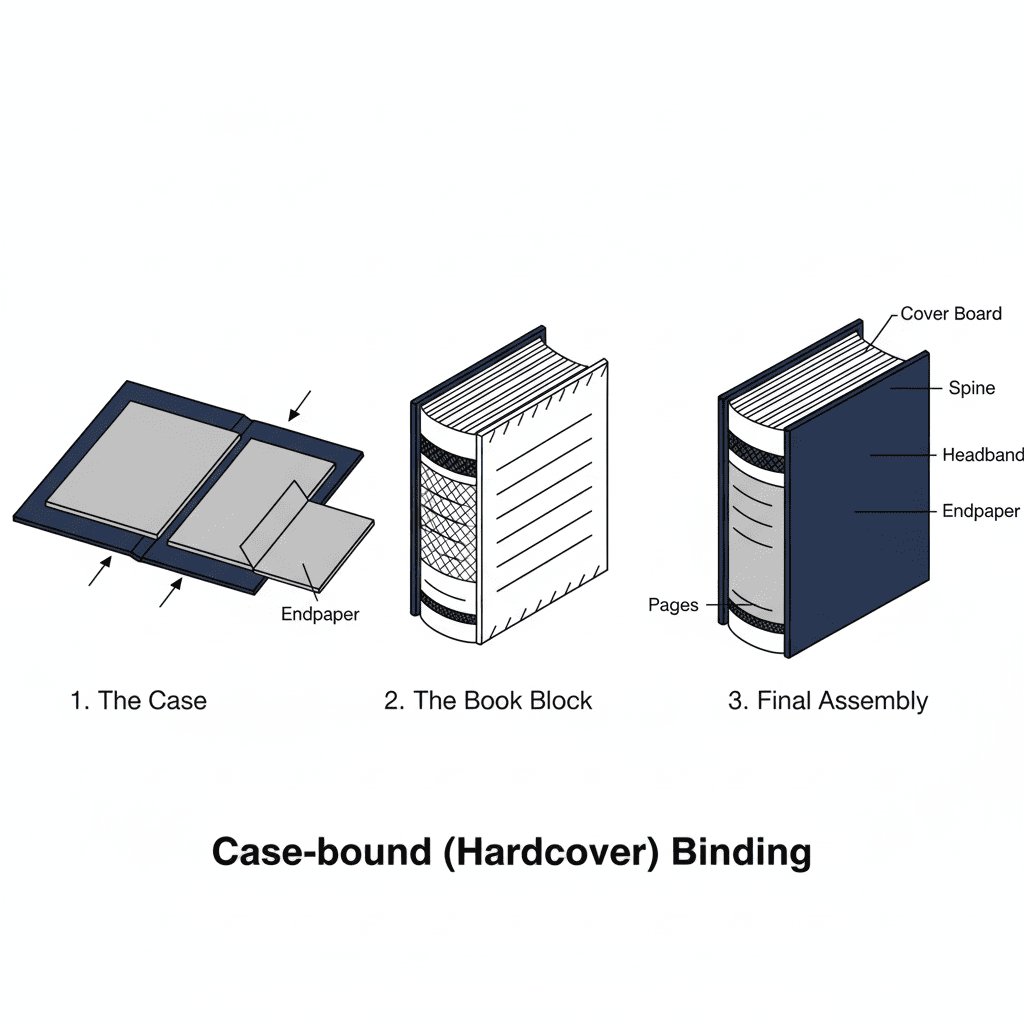
The case-bound or basic hardcover is constructed using a combination of boards and cloth/paper, with endpapers attached. There might also be a dust jacket, depending on the genre of the book or the publisher’s vision. This book is on the heavier side, and while the binding is long-lasting, the dust jacket requires care to avoid wear and tear.
Dust jackets and flaps
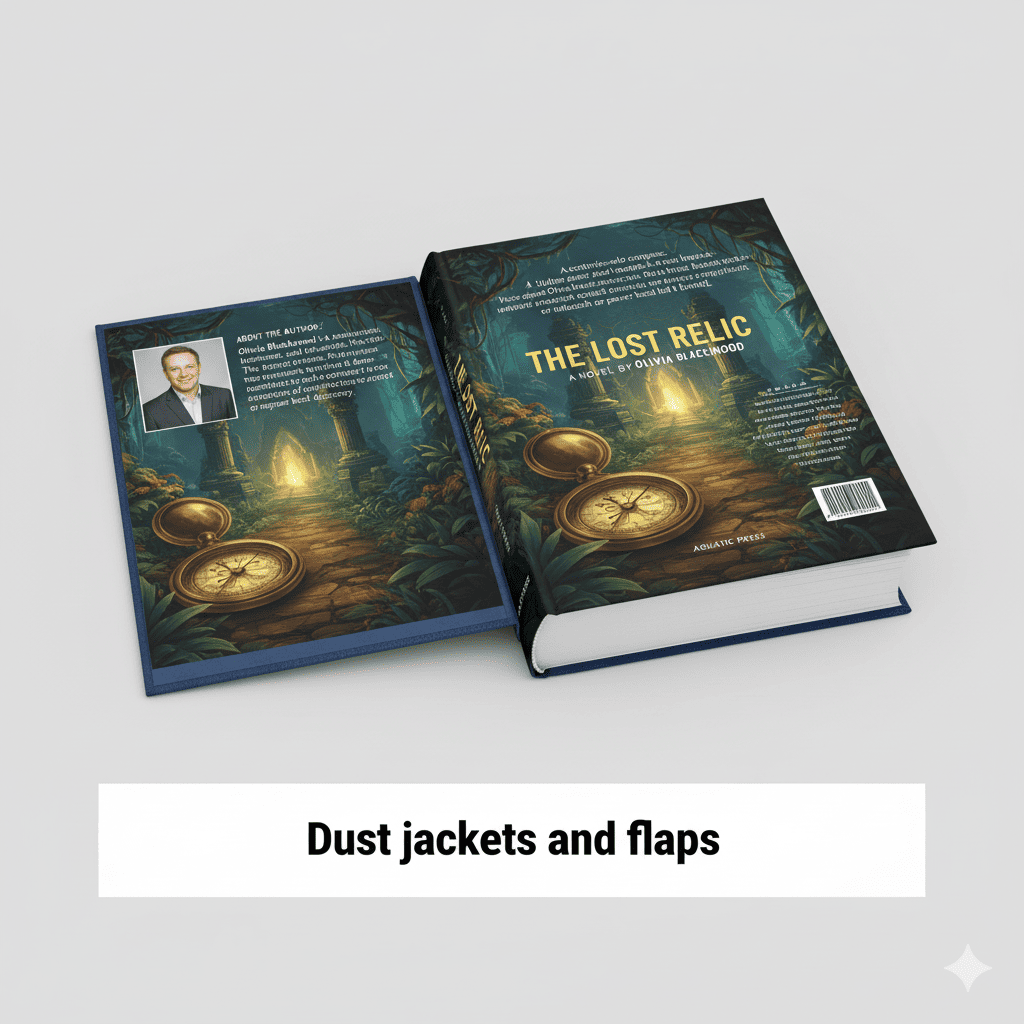
Dust jackets and flaps serve a dual purpose—they provide plenty of marketing space, and the thick flaps also protect the book from wear and tear. Variants such as the French or gatefold flaps—thick, broad flaps that are almost as wide as the cover itself—offer plenty of space for the printing of ancillary text.
Popular book cover design styles
Now that we have nailed down the different types of book covers and their binding styles, let us take a look at which genres they are best suited to and the pros and cons of the same.
1. Typographic: The focus of this cover type is the title of the book—it has a strong, commanding appearance with a clean, attractive font, and is best suited to nonfiction, literary fiction, and darker fiction. Good examples are Yellowface by R.F. Kuang and Butter by Asako Yuzuki.
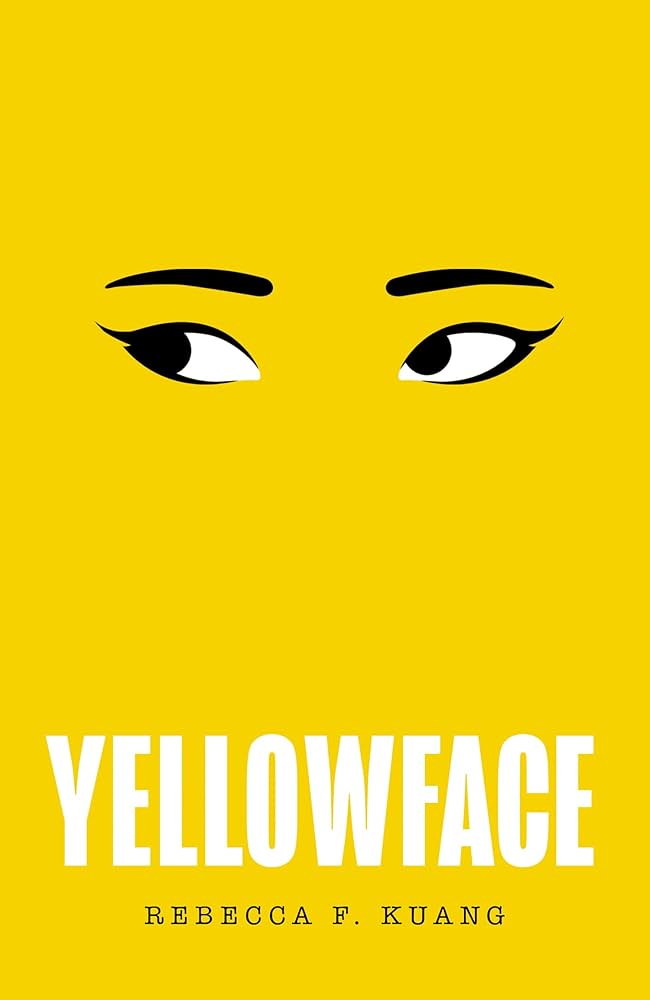
2. Minimalist: This cover type is clean and modern in appearance, with no unnecessary frills or clutter. It works well for business and self-help books, but runs the risk of being too plain and not adequately informing the reader about the contents of the book. Some great examples are Atomic Habits by James Clear and The Ethical Capitalist by Julian Richer.

3. Retro: This cover type tends to be more flowery and graphic-heavy, focusing on creating a strong, evocative visual for the reader. It could make use of nostalgic/art deco/pop-art elements, and is ideally suited to historical fiction. Strong examples are The Duke and I and Romancing Mr Bridgerton by Julia Quinn.
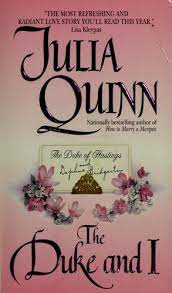
4. Scene-Setting: This type of cover relies heavily on the characters and plot of the book to instill curiosity in the reader. Another graphic-heavy cover type, it usually portrays a pivotal scene from the book on the cover. The cover of To Kill a Witch by Christopher Patterson is a great example.

5. Portrait: This type of book cover usually has a strong, focused portrait on the cover—usually of the writer or the subject of the book. It is ideal for memoirs, biographies, and character-driven fiction. Great examples include Becoming by Michelle Obama and Spare by Prince Harry.
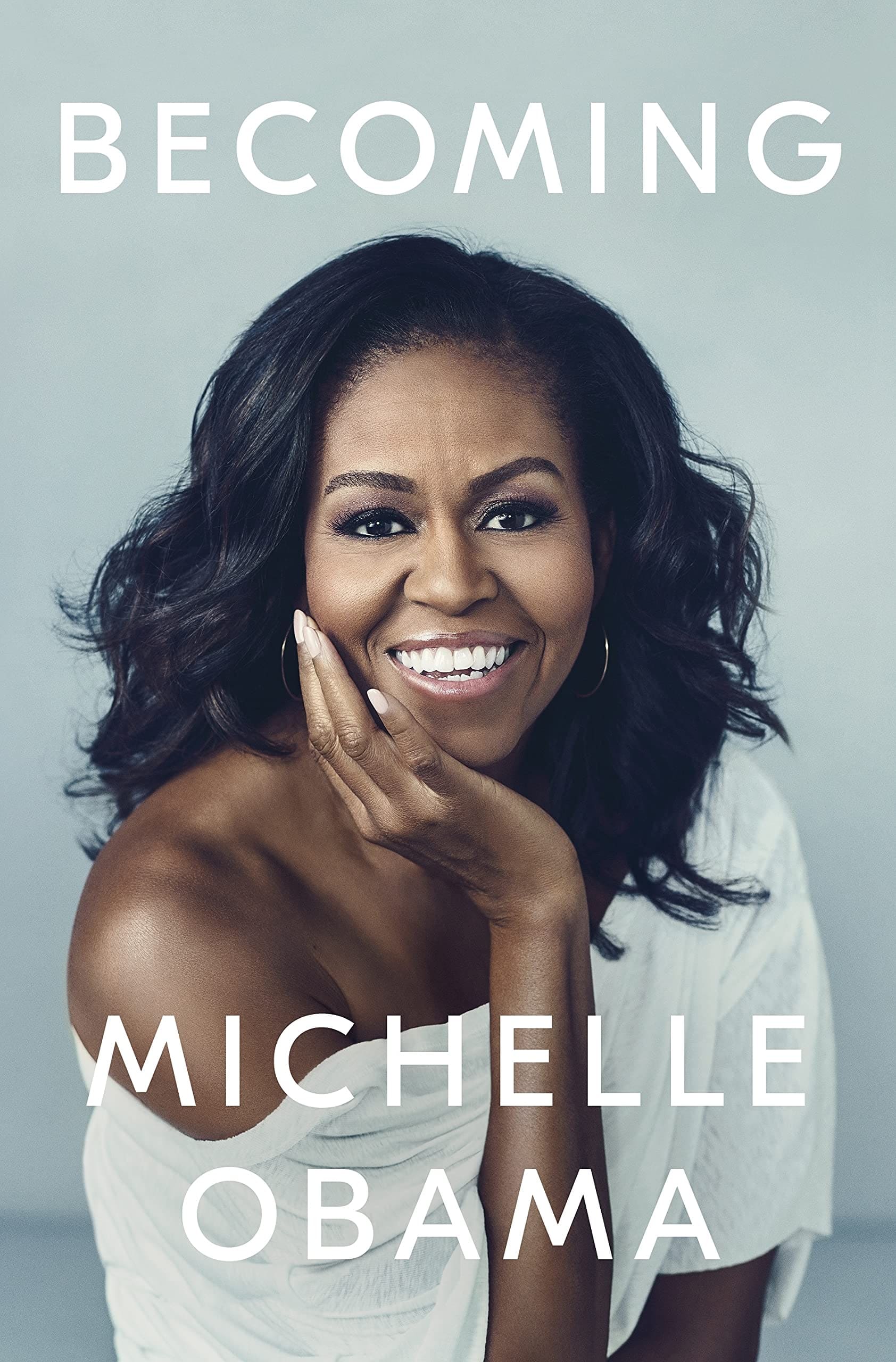
6. Illustrated: This type of cover is graphic-heavy, leaning on customised illustrations that capture the essence of the story. It is great for children’s literature, fantasy, sci-fi, romance, and adventure. Good examples include Luv Shuv in New York by N.M. Patel and Wild Honey from the Moon by Ken Kraegel.
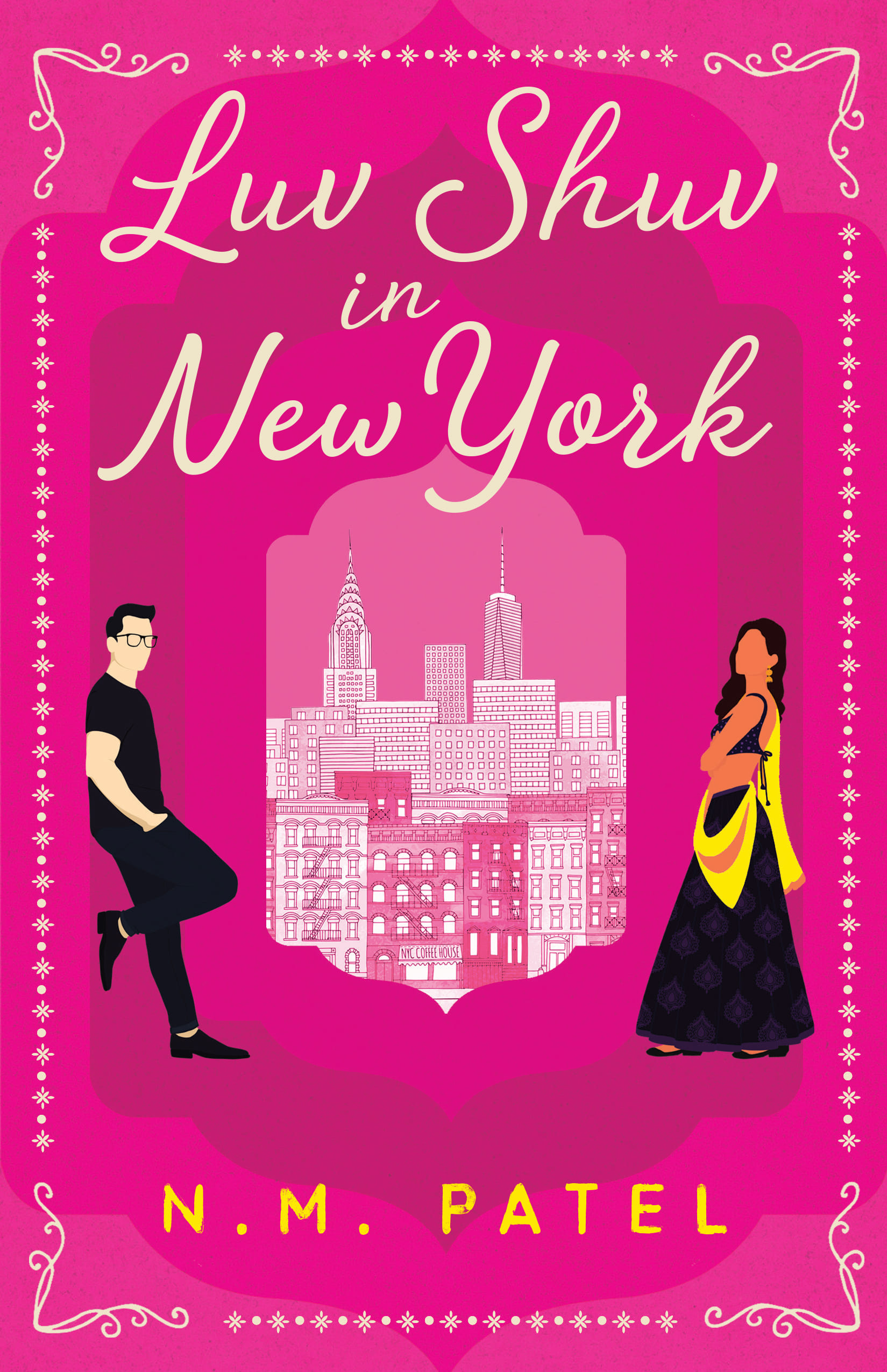
7. Object-based: As the name suggests, object-based book covers make a single object the focus of the cover to create intrigue without giving away the context of the story. Popular examples include the Twilight Saga by Stephenie Meyer and the Fifty Shades series by E.L. James.
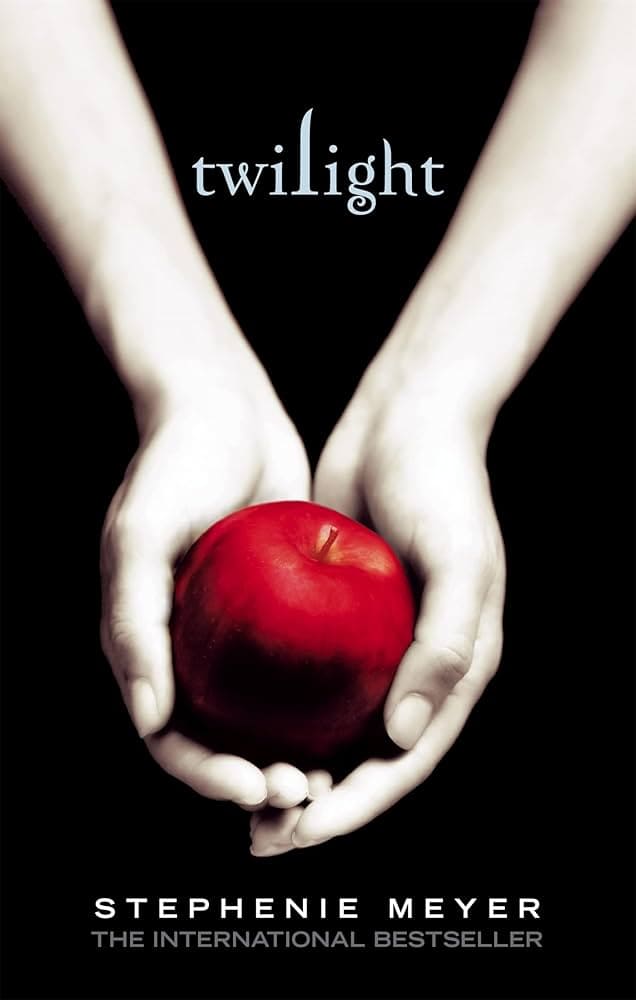
8. Symbol-based: This kind of book cover narrows its focus to a single sigil or symbol that is integral to the plot. It is usually used in fantasy, thriller, or dystopian fiction. Great examples include the Hunger Games series by Suzanne Collins and the A Court of Thorns and Roses series by Sarah J. Maas.
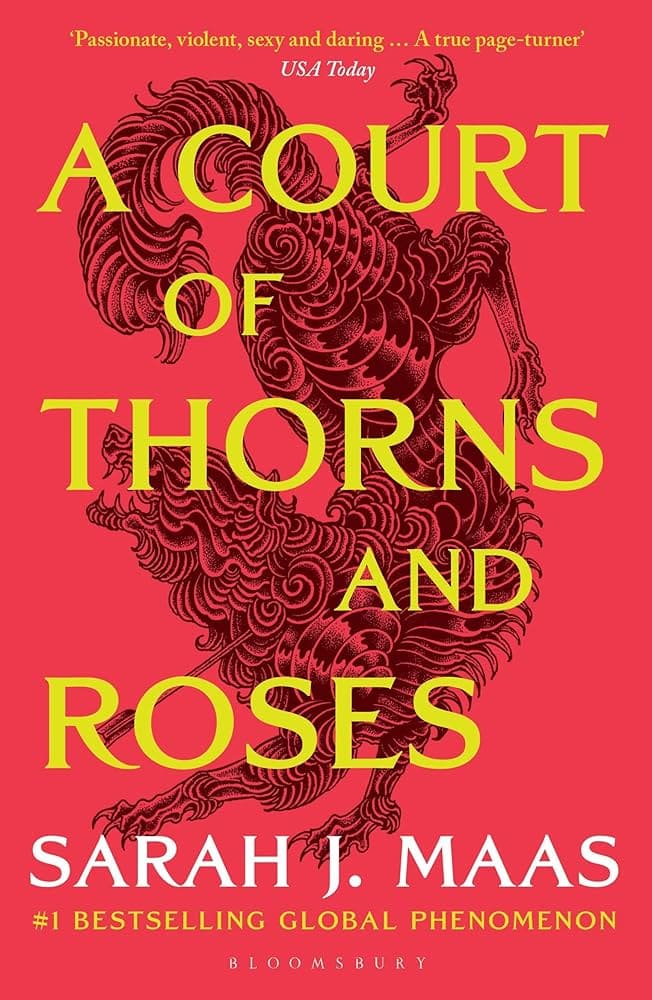
9. Pattern-Based: These book covers are striking and are characterized by repetitive graphics and less plot detail. They are great for art or design books. Well-known examples include Pretty Much Everything by Aaron James Draplin.

10. Photographic: These books, as the name suggests, have a single bold photograph as the cover focus. They focus on realism rather than imaginative power, and are ideally suited to modern fiction, nonfiction, and travel books. One should avoid using stock images as they can look generic. A great example of a photographic book cover is The Atlas of Beauty by Mihaela Noroc.

11. Cityscapes: These book covers usually focus on liminal space and give off urban/city vibes. They are ideally suited to travel books, urban fiction, and dystopian or steampunk novels. A good example is The Big Book of Cyberpunk Vol. II by Jared Shurin.
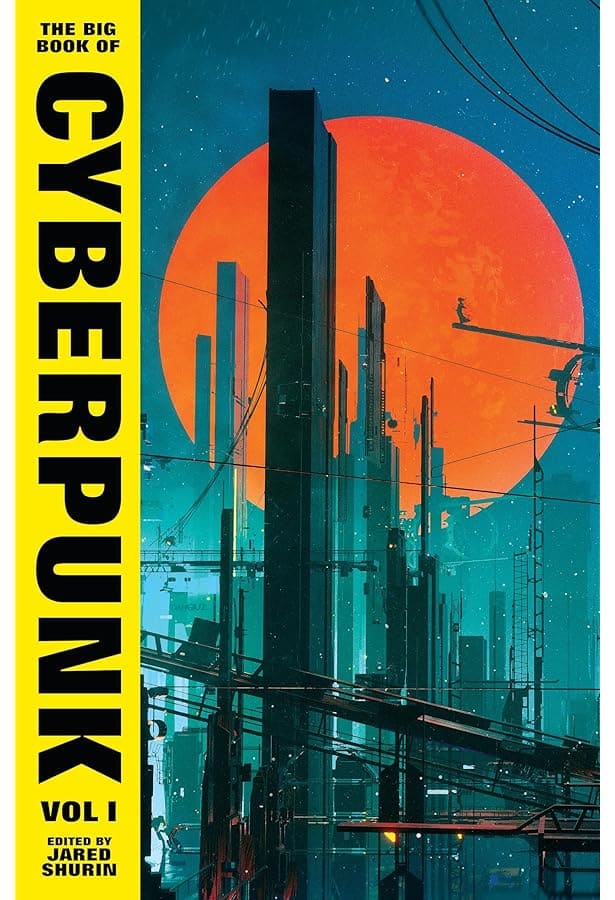
Choosing the right cover: audience, budget, durability
When it comes to choosing the right cover type for your book, there are some key points to keep in mind.
1. Firstly, what is the intended use of your book? Is it intended for portable trade or as a keepsake to be kept on display? For the former, paperback is the best option, and for the latter, hardcover with flaps or a dust jacket works well.
2. What is the page count of your book? Saddle or spiral-bound works well for books with fewer than 100 pages, and perfect/PUR binding is well-suited to books over 100 pages long.
3. The durability of the book also needs to be kept in mind. PUR or hardcover works well for books intended for heavy or rough use, while dust jackets are best suited to debut or promo books that will be kept on display.
4. The transport profile of the target audience needs to be kept in mind. If the book is going to be read by commuters who need a more portable format, a softcover is a good option. On the other hand, hardcover works well for coffee table books that will largely be displayed at home.
5. It is important to ensure the genre matches the cover design style to avoid misleading or confusing the target audience. For example, a typography-heavy cover would be a mismatch in the fantasy genre.
Cost, weight, and printing considerations
It is important to keep certain logistical considerations in mind when choosing the cover type.
1. The cost hierarchy: Softcovers are the most cost-effective cover type, followed by perfect/PUR binding, followed by hardcover with ImageWrap, followed by the most expensive—hardcover with a dust jacket. The type of cover and binding chosen will affect the cost of the book.
2. Weight/shipping: Softcovers are lightweight and easy to pack into cartons and transport, while hardcover tends to weigh more and thereby increase the shipping cost.
3. Lamination and finishes: While matte covers look attractive and classy, they are notorious for catching dust, while gloss laminations—though not as aesthetically pleasing—have greater dust and scuff resistance.
4. End sheets: End sheets are usually left blank, but it is also possible to make them printable. It is important to choose colors and designs that work harmoniously with the book’s main cover.
Practical examples and recommendations
Here are some practical examples of matching the cover and binding type to the genre of the book:
1. Children’s cookbook: This kind of book would have an ImageWrap hardcover. It should be able to function as a flat-lay, as it is likely to be photo- or illustration-heavy.
2. Debut literary memoir: A hard-hitting piece of literary nonfiction, such as a debut memoir by a famous personality, is best suited to a hardcover with a dust jacket, along with a portrait on the cover with strong or minimalist typography.
3. Indie fantasy novel: This kind of book would work best as a softcover for affordability. The cover graphics need to stand out to the reader and convey the atmosphere of the story, for which a symbol or illustration on the cover would work best.
4. Corporate manual: A corporate manual is deally designed for functionality over aesthetics—it serves a specific, preordained purpose. The PUR perfect binding is ideally suited to this, along with a typographic/minimalist cover with clean lines and no clutter.
Common mistakes to avoid
There are some common errors to avoid in order to ensure that your book cover is perfect for the book it holds.
1. Firstly, the cover design must represent the genre or contents of the book—a style–genre mismatch can be misleading to potential buyers.
2. Overusing stock photos to create the cover graphics can come across as trite—it is important to follow the Goldilocks rule—neither too much nor too little, but just right. Choose a stock image that best suits the genre or content of the book and build the rest of the cover around it.
3. Illegible typography when the book cover is at thumbnail size, such as on an e-commerce site or a library catalog, can lead to readers skipping it over entirely and choosing another option. It’s important to ensure the text is always clear and legible, no matter the size of the image.
4. When designing and constructing a book cover, it is important to keep in mind the needs of the final user. Ignoring end-user handling—especially when it comes to flat-lays—can lead to damage to the book once it is used by the customer, or the customer choosing not to read it at all due to the uncomfortable handling process.
5. Dust jacket flaps provide an ideal space to include marketing copy that could boost the sales of the book. Not planning for marketing copy and underutilizing this space would be detrimental to the potential sales success of the book.
Formatting and file prep checklist
Once your cover design and binding type are finalised, here are some final points to keep in mind before sending the book to press:
1. Ensure you have calculated the spine width correctly to fit the necessary number of pages comfortably and accommodate the spine design of the cover.
2. Printing always runs the risk of bleeding; hence, it is important to leave enough margin for the same to avoid ruining the quality of the book.
3. Ensure your images are high-resolution and do not get pixellated during the printing process.
4. Choosing the right CMYK profile is essential to ensure that matching colors are used across devices and printing platforms for uniformity.
5. The barcode is an essential part of the book cover—ensure it is modestly sized (neither too big nor too small) and placed on the lower part of the back cover for easy scanning and billing.
6. If multiple versions of the same book are being produced (e., Hardcover, softcover, etc.), it is important to ensure that there is a separate jacket template for each one. The front, back, spine, and flaps (if applicable) need to be designed and sized separately for each version to avoid sizing issues.
All in all, crafting a book cover is an intensive process that involves many factors—ideation, design, and logistics, to name a few. Choosing the right format and designing an appropriate cover will go a long way in getting your book the visibility it needs.
PaperTrue offers expert, hassle-free self-publishing services that allow you to get your manuscript edited and published by professionals. Check them out!
Here are some more resources:



